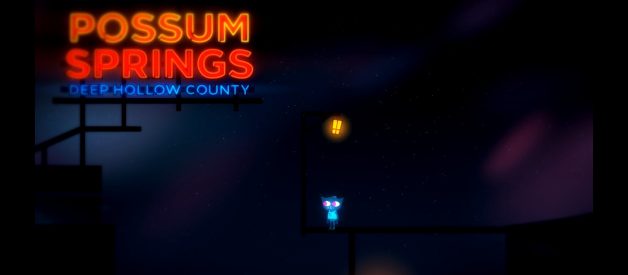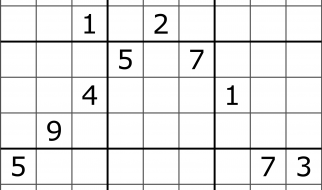Disclaimer: This write-up has significant Night in the Woods plot spoilers.
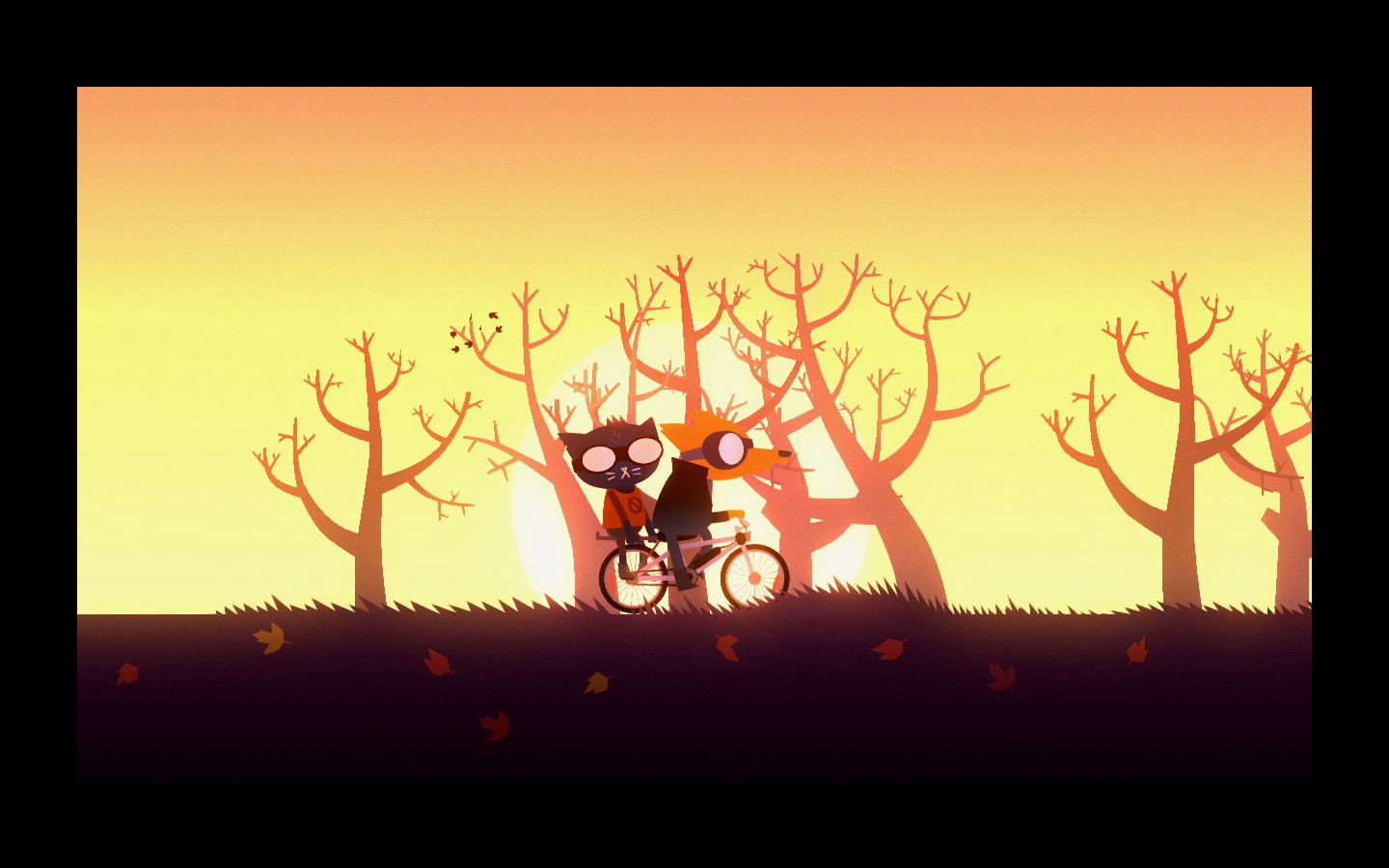
For a game starring colorful anthropomorphic animals, Night in the Woods has a lot to say about the human experience. The main characters are fully realized, tackling different challenges like bipolar disorder, loss of family, and disassociation, and Night in the Woods is dedicated to exploring the ways different people cope with their struggles.
Life is a series of patterns that are best understood and given meaning to when shared with other people.
The guiding philosophy of the Night in the Woods? characters and universe is stated about two thirds through the game: life is a series of patterns that each person interprets differently ? patterns that are best understood and given meaning to when shared with other people. ?Patterns? and the way people interpret them are broad ideas, and Night in the Woods acknowledges this. Different characters throughout the game give examples of patterns as the ways different people see the world, as the routines that drive each person?s schedules, as the trajectory of the overall community as it grows, shrinks, and grows again.
One of the most directly discussed patterns in Night in the Woods are the patterns Mae sees when she disassociates. She describes seeing the world as different arrangements of shapes that she loses the ability to make sense of, alienating her emotions when her brain can?t make connections between what she sees and what she feels.
In the game?s first dream sequence, Mae uses a sword to slowly disassemble a giant representation of the Founder Statue that tormented her at college. The dream version of the statue is made up of giant twisted metal shapes that groan and point at Mae as they collapse, showing how the trauma she encountered at college and the violent outburst she had years ago are being carried with her despite her reluctance to talk about it.
However, only when Mae opens up to her friends and family about it does she begin to feel better, tying the game?s themes back to a very clear, optimistic view of how humans can best make sense of life?s patterns when they?re sharing them and supporting each other. In the end, the strong support network Mae has in Possum Springs is what pulls her back from the existential dread that looms over Night in the Woods? plot and her psyche.
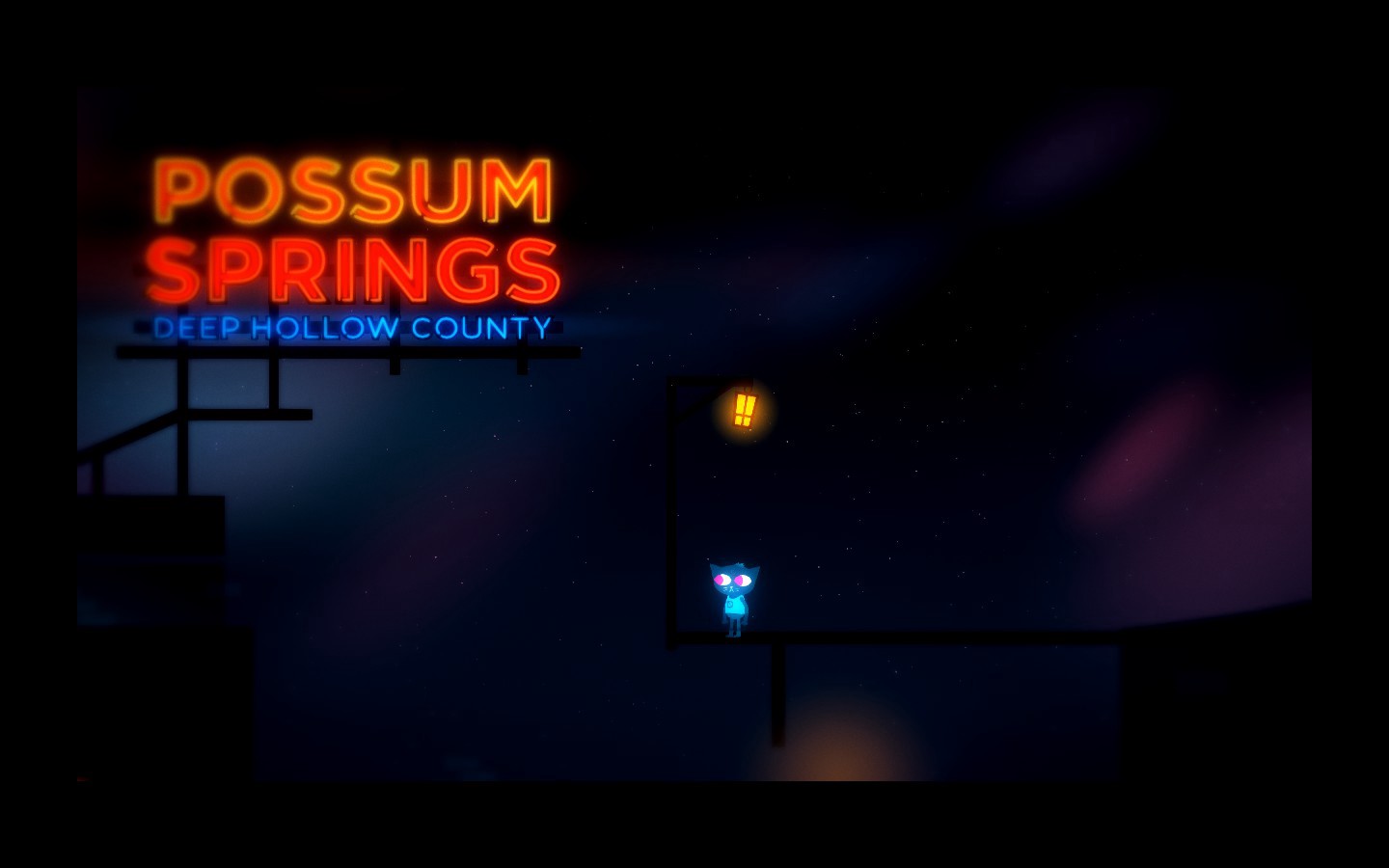
An entirely different pattern dominates gameplay during the bulk of the game?s two longest acts. Night in the Woods eases players into a kind of routine, adding new elements and areas to explore every day in the first few hours of the game and more slowly throughout the rest of the game ? mirroring, on a smaller scale, the core gameplay loops used by games like Stardew Valley to gradually introduce players to their worlds.
Night in the Woods? routine is pretty easy to summarize: wake up, check computer messages, talk to Mom, visit side characters and locations to progress smaller storylines across the town, check with one of the other three main characters to go on an adventure and progress the main storyline, head home, talk to Dad, check computer messages again, sleep, dream sequence. This routine makes up the gameplay for just about every day in the game?s middle acts ? about two-thirds of the total game.
Though simple, this routine immerses players in the world, forces them to really have to work toward building relationships with main characters and side characters, and shows how small and limiting life can feel in a small town once you?re used to the districts of Possum Springs and how you interact with them during each day. As players are invited (but never forced) to participate in all of these rituals every day, the repetitiveness of this routine can start to become predictable, somewhat comforting, and somewhat tiring, looping back the game?s focus on what it feels like to live in a small town and how that impacts its characters.

?I believe in a universe that doesn?t care and people who do.?
The game?s philosophical outlook places its faith not so much in a god as much as it does in the power of human connection and compassion. This is most explicitly talked about in a late-game conversation where Mae lashes out at Pastor K for admitting she doesn?t have total faith in any god, choosing each week to get up and preach, knowing the benefit her words have on the people who come to church to be comforted and to feel like part of a community. The game isn?t atheistic or agnostic as much as it is indifferent, focusing on how people can work together to make sense of the often-inscrutable challenges and patterns that make up our lives, regardless of where they came from.
Angus, the game?s intellectual realist, sits down with Mae during an optional outing late in the game, opening up about his tough upbringing and how he found solace in other people rather than any higher spiritual power. It was here that Angus said the line that stuck out to me the most in the entire game: ?I believe in a universe that doesn?t care and people who do.?
Working together, people are able to draw meaning out of total insignificance. In this same scene, Angus explains that the stars are just arbitrary patterns that don?t hold any meaning outside of those passed between people when stories are shared and pictures are drawn in the sky. The same could be said of Mae?s dreams: incomprehensible vignettes that only just begin to make more sense when she discusses them with other people. These patterns are given meaning when they?re relayed between different people, allowing new perspectives and understandings to surface. This all ends up sounding very heavy-handed when I mention it, but the way Night in the Woods approaches it is careful and casual.
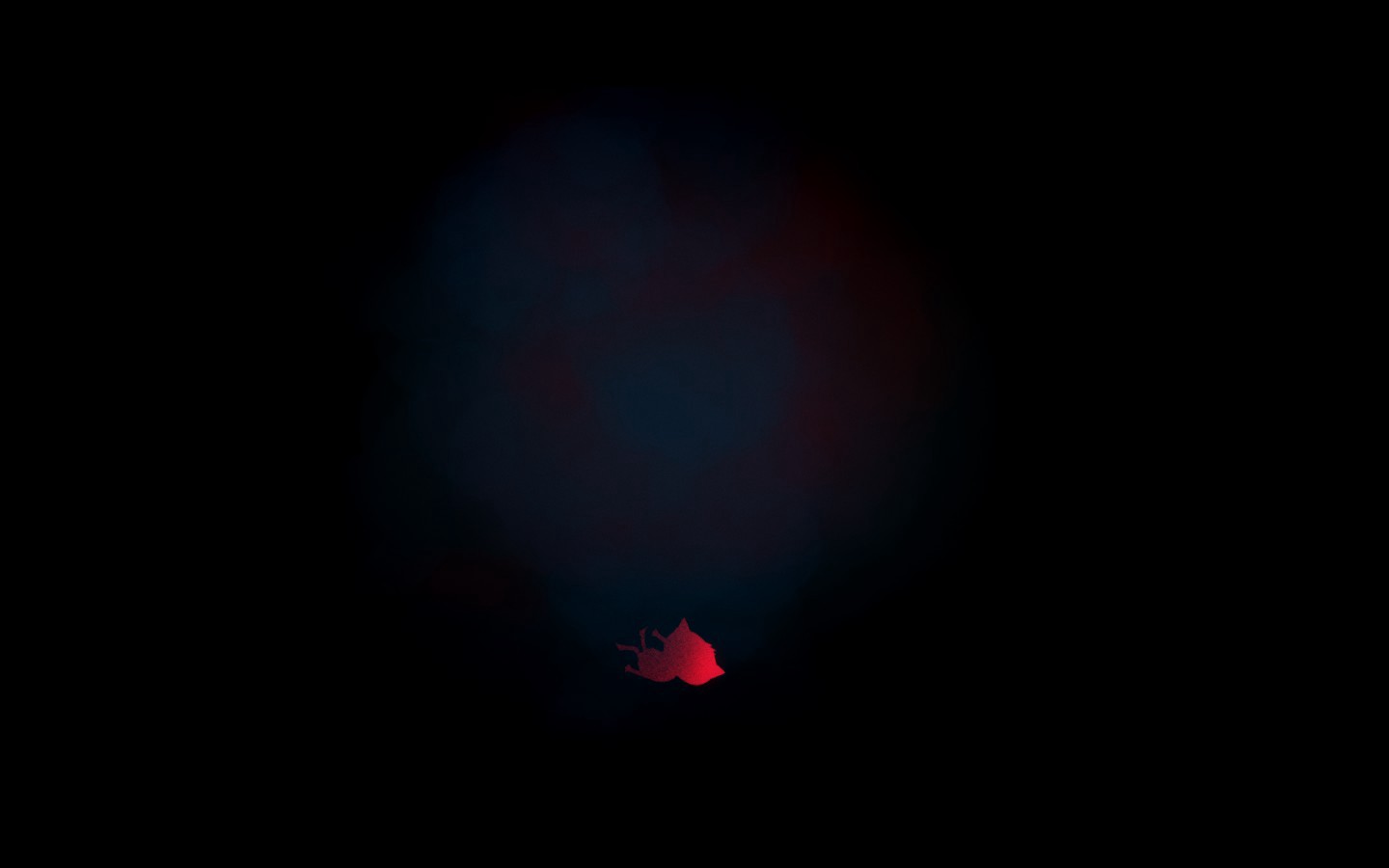
Patterns come up again as a major theme in the last hours of the game, where the overarching pattern of Possum Springs? growth becomes a point of contention when Mae and her friends face the ?dad cult? ? a group of aging Possum Springs residents who have no problem sacrificing what they identify as unproductive members of society in order to appeases the Eldritch god living under the small town and artificially prolong the town?s life. This plot twist isn?t the subtlest way to bring up (and literalize) a lot of different points, but it is definitely effective, especially when taken alongside the game?s other themes.
There is no clear line to draw between acting compassionately and acting selfishly on behalf of your community.
This group is painted as the game?s antagonists because they prioritize appeasing the unknowable patterns of the world over human connection, empathy, and compassion. They sacrifice kids based on the belief that they?re currying favor with a god that will protect their town, a town clearly in decline despite the group?s dozens of sacrifices. The ?dad cult? members are so caught up in their fear of change (in their routines and in the status quo) that they have bought into the idea of the ?hole at the center of everything? that will bring about change in Possum Springs unless they continue to go against the themes of human connection and compassion furthered by most of the game?s other characters.
This isn?t all to claim that there is always a clear line to draw between acting compassionately and acting selfishly on behalf of your community. Mae makes a spur-of-the-moment decision during the climax of the game, but, assuming the Eldritch god under the town is real, it?s impossible to tie a neat ribbon around this overarching plot by judging whether putting a stop the sacrifices is wholly good or bad. It?s entirely possible that Mae and her friends doomed Possum Springs through their actions, but, for the most part, the game is more focused on the relationships she?s developed with her friends and the rest of the community while doing so ? something that is valuable no matter how much longer Possum Springs lasts.
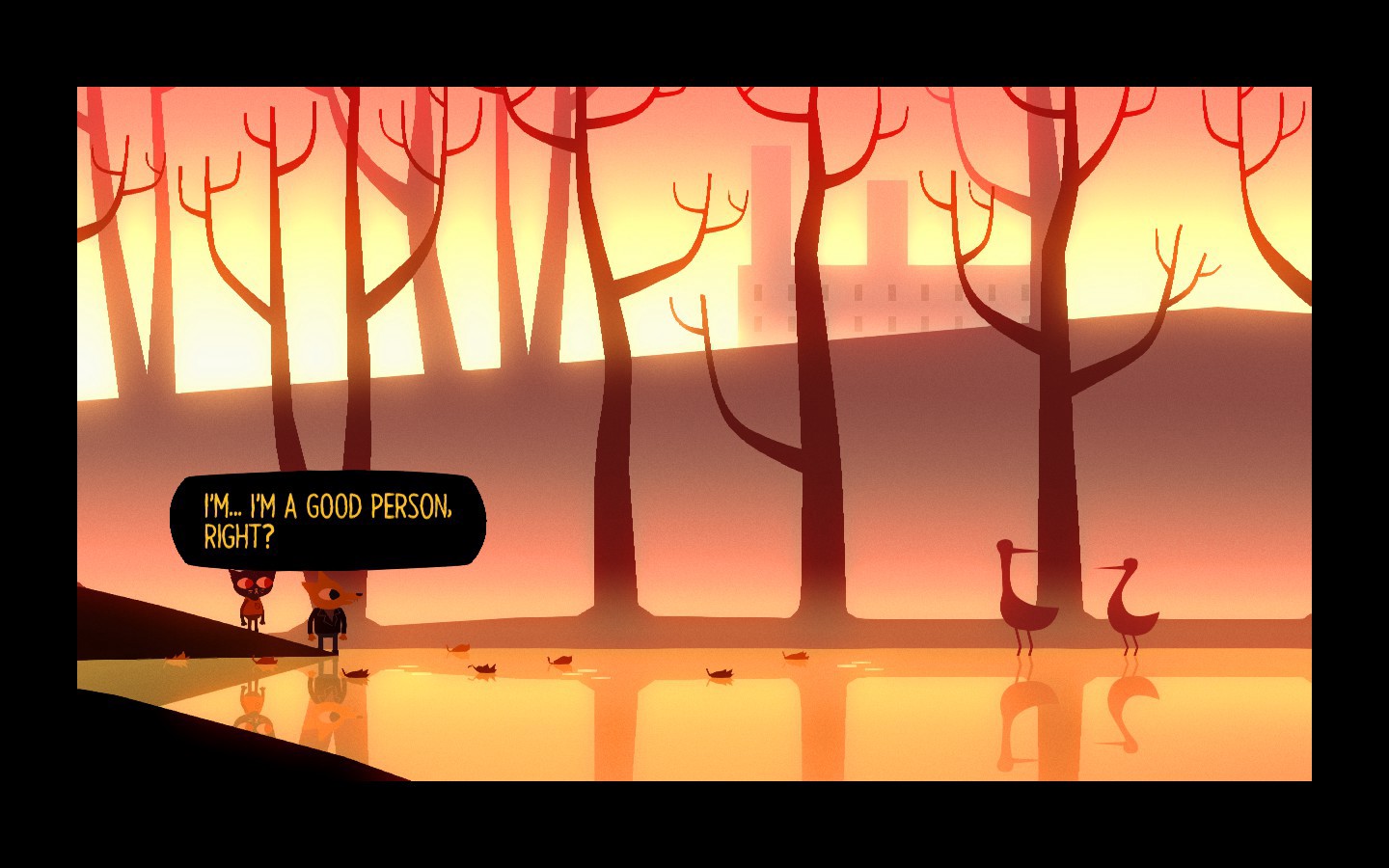
Night in the Woods prioritizes conversations and relationships over any slow-burning mystery or big revelation.
Night in the Woods is a one-of-a-kind game that showcases a unique philosophy and complicated characters alongside its gorgeous art style. It is focused on interpersonal connections, tackling heavy subjects in ways that might seem surprising given the whimsical, heavily stylized world and characters. The characters in Night in the Woods help each other make sense of life?s patterns, coming away from the game?s events in a place at least a little better than where they started in.
The game prioritizes heartfelt conversations and relationship building over the mystery slow-burning in the background of the story or any big, late-game revelations. It focuses on the details, the patterns in the gameplay, the routines, and how you, the player, make sense of them and react to them. You give them meaning to Night in the Woods? stories by choosing which routines you experience each time you play, and the relationships you build end up being more important and emotionally impactful than any final act twist could hope to be.
